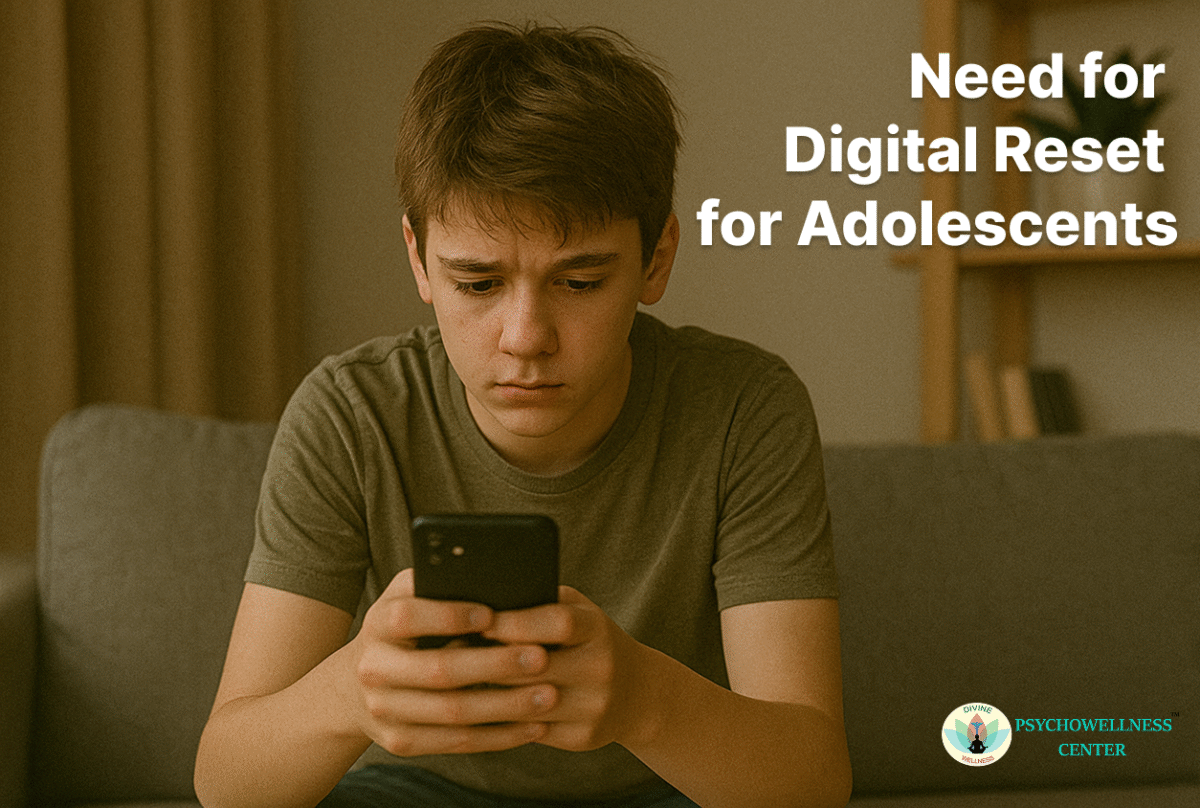In the fast-changing digital landscape of today, young people are traversing an environment that is unprecedented compared to what earlier generations have encountered. From smartphones and gaming consoles to endless scrolling on social media, their lives are more connected than ever—but not always in a healthy way. While technology provides vast opportunities for learning and communication, its excessive use can disrupt mental, emotional, and social development. This is where the concept of a digital reset becomes not just helpful, but essential.
What Is a Digital Reset?
A digital reset refers to a conscious break from screen time and digital engagement. It’s a pause that allows individuals, especially adolescents, to evaluate their technology use, develop healthier habits, and reconnect with real-world experiences.
Why Adolescents Need a Digital Reset
- Mental Health Struggles:- Increasing screen time has been linked with rising cases of anxiety, depression, and loneliness among adolescents. Social media platforms often promote unrealistic standards of beauty, lifestyle, and success, which can lead to feelings of inadequacy and low self-esteem. A digital reset can reduce exposure to these harmful comparisons and provide much-needed mental space.
- Sleep Disturbances:- Many adolescents use screens late into the night, which interferes with their natural sleep cycles. The blue light emitted by devices suppresses melatonin, a hormone that regulates sleep, leading to difficulty falling asleep and daytime fatigue. A digital reset, especially during the evening hours, helps restore a healthy sleep pattern.
- Reduced Attention Span:- Short-form content, constant notifications, and multitasking can significantly impair an adolescent’s attention span and ability to concentrate. Disconnecting from devices allows the brain to rest and re-engage in deep focus activities.
- Disconnection from Reality:- Spending excessive time in virtual worlds can lead adolescents to feel disconnected from their families, friends, and even themselves. In-person social skills may decline, and the ability to form meaningful, face-to-face relationships can weaken. A digital reset reorients them to the richness of real-life interactions.
- Identity and Self-Esteem Issues:- Adolescents are at a vital phase of developing their identities. They may feel pressure to maintain a certain image online, which can be mentally exhausting. A digital break allows them to explore their authentic selves without the influence of likes, filters, or follower counts.
Signs That a Digital Reset Is Needed
Parents, caregivers, and educators should watch for signs such as:
- Irritability or anxiety when not using devices
- Declining academic or physical health
- Reduced interest in offline hobbies
- Trouble sleeping or concentrating
- Withdrawal from family bonds and friendships
Recognising these signals early can help initiate healthier habits before patterns become deeply ingrained.
How to Encourage a Digital Reset
- Set Clear Boundaries:- Establish screen-free times during meals, study hours, and an hour before bedtime. These routines help adolescents mentally detach from digital overstimulation.
- Promote Offline Activities:- Encourage activities like reading, painting, sports, playing an instrument, or spending time in nature. These experiences can provide joy and stimulation without the negative effects of screen exposure.
- Introduce Tech-Free Zones:- Identify specific sections of the home, such as bedrooms or the dining area, as zones free from devices. These physical boundaries reinforce the mental habit of being present.
- Educate, Don’t Just Enforce:- Talk to adolescents about the impact of technology on their well-being. Empower them with knowledge so they can make more mindful choices, rather than simply obeying rules.
- Model Healthy Habits:- Adults must lead by example. When young people see their parents or mentors practising mindful technology use, they are more likely to follow suit.
Role of Schools and Communities
Educational institutions can integrate digital wellness into their curriculum. Interactive workshops, awareness drives, and designated tech-free breaks during school hours can promote responsible use. Community organisations can also host events focused on nature walks, art activities, or collaborative projects that pull adolescents away from screens and into real-world engagement.
A Balanced Digital Life Is Possible
A digital reset is about using it wisely. Technology is a valuable tool, but without boundaries, it can quickly become a source of distress. Adolescents need support in learning how to balance their digital lives with their physical, emotional, and social development.
Encouraging a digital reset can empower young people to become more mindful, resilient, and connected—both to themselves and the world around them. In a society where constant connectivity is the norm, choosing to pause and reflect is an act of strength and self-awareness.
Conclusion
In an era characterised by incessant notifications and digital comparisons, a digital reset is not merely a luxury; it is an essential requirement. Helping adolescents cultivate a healthier relationship with technology will not only enhance their present well-being but also lay the foundation for a more balanced, grounded adulthood. Digital wellbeing counselling can play a vital role in guiding young individuals to set healthy boundaries, reduce screen dependence, and reconnect with offline life. Let’s guide them toward digital mindfulness, one conscious step at a time. Take the step, schedule a consultation at the Psychowellness Center located in Janakpuri or Dwarka by calling 011-47039812 or 7827208707. For convenient access to online therapy tailored to digital concerns, you can also explore the TalktoAngel platform.
Contributed by Ms. Srishti Jain, Counselling Psychologist
References
- Odgers, C. L., & Jensen, M. R. (2020). Adolescent mental health in the digital age: Facts, fears, and future directions. Journal of Child Psychology and Psychiatry, 61(3), 336–348. https://doi.org/10.1111/jcpp.13190
- Rideout, V., & Robb, M. B. (2019). The Common Sense Census: Media use by tweens and teens. Common Sense Media. https://www.commonsensemedia.org
- Twenge, J. M. (2017). iGen: Why today’s super-connected kids are growing up less rebellious, more tolerant, less happy—and completely unprepared for adulthood. Atria Books.

